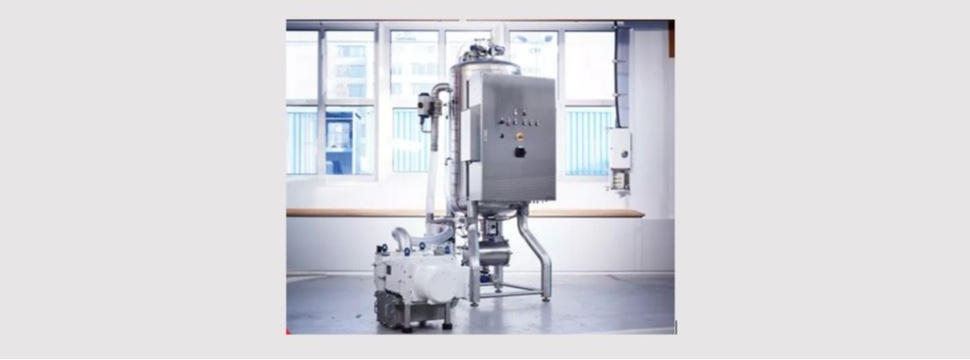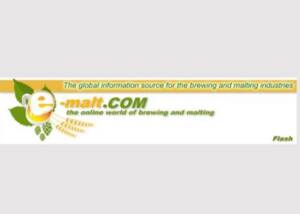Leybold develops vacuum solution for sustainable beer bottling
News General news
Oil-free vacuum reduces costs and ensures a high level of hygiene
The classic glass beer bottle offers numerous advantages for producers and consumers compared to other types of containers. In addition to a fresh taste and protection from external contaminants, the bottle design communicates the brand image and contributes to the enjoyment of the beverage. With this in mind, it’s no coincidence that in Germany alone, there are currently several billion glass bottles from various breweries in circulation.

Quality risk due to oxygen ingress
In order to preserve these benefits, specific technical considerations must be taken into account when filling glass bottles, as beer is especially sensitive to oxygen. If too much oxygen enters the bottle during the filling process, adverse chemical reaction can occur. This results in a loss of quality in terms of taste, color and shelf life. In order to limit the amount of residual oxygen, the bottling process takes place under controlled vacuum conditions
A system for 60,000 beer bottles per hour
“Until recently, liquid ring vacuum pumps were the standard solution for beer filling,” explains Leybold’s Market Sector Manager, Pierre Lantheaume. "However, this type of pump offers technical and economical disadvantages. In addition to excessive water and energy consumption, brewers also risk wastewater contamination and downtime due to cavitation phenomena,” says Lantheaume. However, these undesirable effects are now a thing of the past, as Leybold has developed a sustainable vacuum system which, depending on bottle size, can support filling lines with outputs of up to 60,000 bottles per hour.
Simple installation
The BBVS (Beer Bottling Vacuum System) comes as an all-in-one turnkey solution to replace the old liquid ring pump technology. It includes a separator tank with an automatic operated draining vessel to stop foam and liquid carried over from the filler via the gas flow. The DRYVAC dry screw vacuum pump provides deep constant vacuum levels, while an electrical cabinet with PLC controls the entire system. The equipment can be interfaced with the filler via digital I/Os or a fieldbus for remote control and can also operate as a stand-alone system via push buttons.
The water-cooled DRYVAC: the star of the show
The water-cooled DRYVAC models, the DV 650 FP-r and DV 800 FP-r, are the stars of the complete solution. Through them, Leybold offers a tried and true screw vacuum pump designed for harsh industrial processes. One main feature is its quiet operation. At ultimate pressures, the DV 650 FP-r generates a noise level of just 67 dB(A), while the DV 800 FP-r generates 70 dB(A). These low levels allow the pumps to be installed in the immediate vicinity of the filling systems. It’s also worth noting that DRYVAC models generate and emit very little heat. The comparatively low internal temperature profile of the screw vacuum pump also prevents the formation of caramel layers that can potentially appear when sugars, carried over with residual beer droplets, are exposed to high temperatures.
CIP and pump flushing for a 100% clean system
A CIP (Cleaning in Place) spray ball, located inside the top area of the stainless-steel separator, allows for the cleaning of all surfaces that come into contact with beer (specifically inside the separator and the draining vessel). Cleaning can be done without switching the system off or dismantling it. Additionally, a pump flushing, which consists of injecting cleaning media (like hot water) directly into the pump inlet, can be done on demand. The ability to be flushed is one of the main advantages of dry vacuum pumps compared to oil-lubricated vacuum pumps. Tank cleaning and pump flushing are fully controlled by the PLC and can be started manually or automatically via the filling machine control system. Last but not least, the DRYVAC FP features a stainless steel silencer and is covered by a corrosion-protective coating, making it 100% suitable for washdown environments.
Low energy and water consumption
The DRYVAC models are equally distinguished by their practical features in addition to their design. In working environments, the DRYVAC’s proven screw design ensures excellent and reliable pump performance, low final pressure and high-energy efficiency. To deliver the same flow at the same working pressure, it requires 15-20% less energy than a liquid ring pump. Cooling water requirements are also reduced by 80% compared to liquid ring pumps when using fresh water. And that's not all — unlike liquid ring pumps, where water is contaminated by the process, the DRYVAC’s cooling circuit is entirely separate, which makes it possible to reuse water for other tasks like bottle exit showers or lubrication of conveyor belts. Service costs are also reasonable. Just one gear box oil exchange is required per year, and a complete overhaul (including a bearings exchange) is performed approximately every five years (depending on customer use).
Filling process improvements
With the DRYVAC’s lower and more stable vacuum levels, the BBVS allows for improved bottling vacuum levels. As a result, the TPO (Total Packaged Oxygen), a Key Performance Indicator in beer bottling which affects taste and shelf life, is positively impacted. Providing a new setting of the filling machine parameters, CO2 consumption can also potentially be decreased. “Since the bottles are flushed with CO2, improved vacuum also leads to a reduction in CO2 consumption, as some of the oxygen is already removed via the evacuation process,” explains BBVS Product Manager, Sven Hanses.
“With Leybold Beer Bottling Vacuum Systems, brewers can not only significantly improve their operating costs and quality of their bottling process, they can also reduce their energy consumption and CO2 emissions — another positive step toward minimizing the environmental footprint of the brewing industry," concludes Hanses.
User advantages at a glance:
- Water Savings: Up to 80% less water consumption compared to Liquid Ring Pumps.
- Sustainability: Up to 20% less energy consumption compared to Liquid Ring Pumps.
- Efficiency: Low downtimes and low maintenance requirements.
- High Performance: Deeper and stable working pressures result in improved product quality (improved TPO levels).










